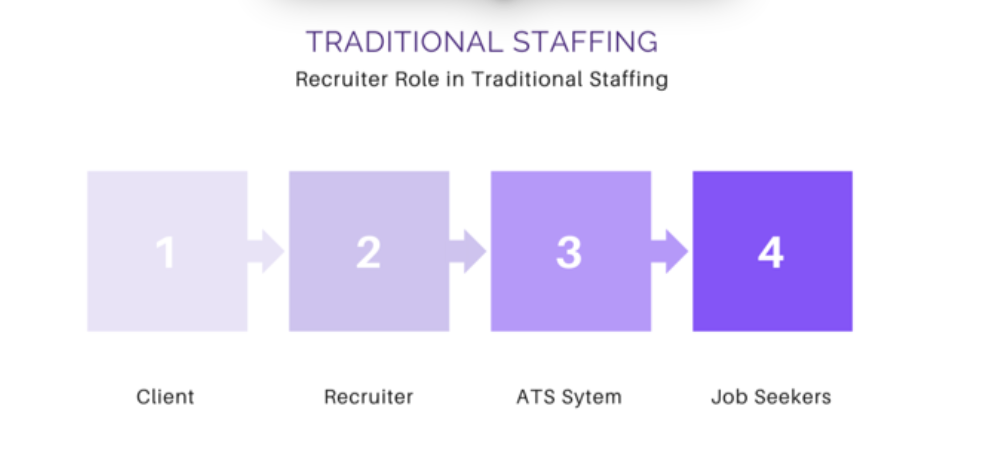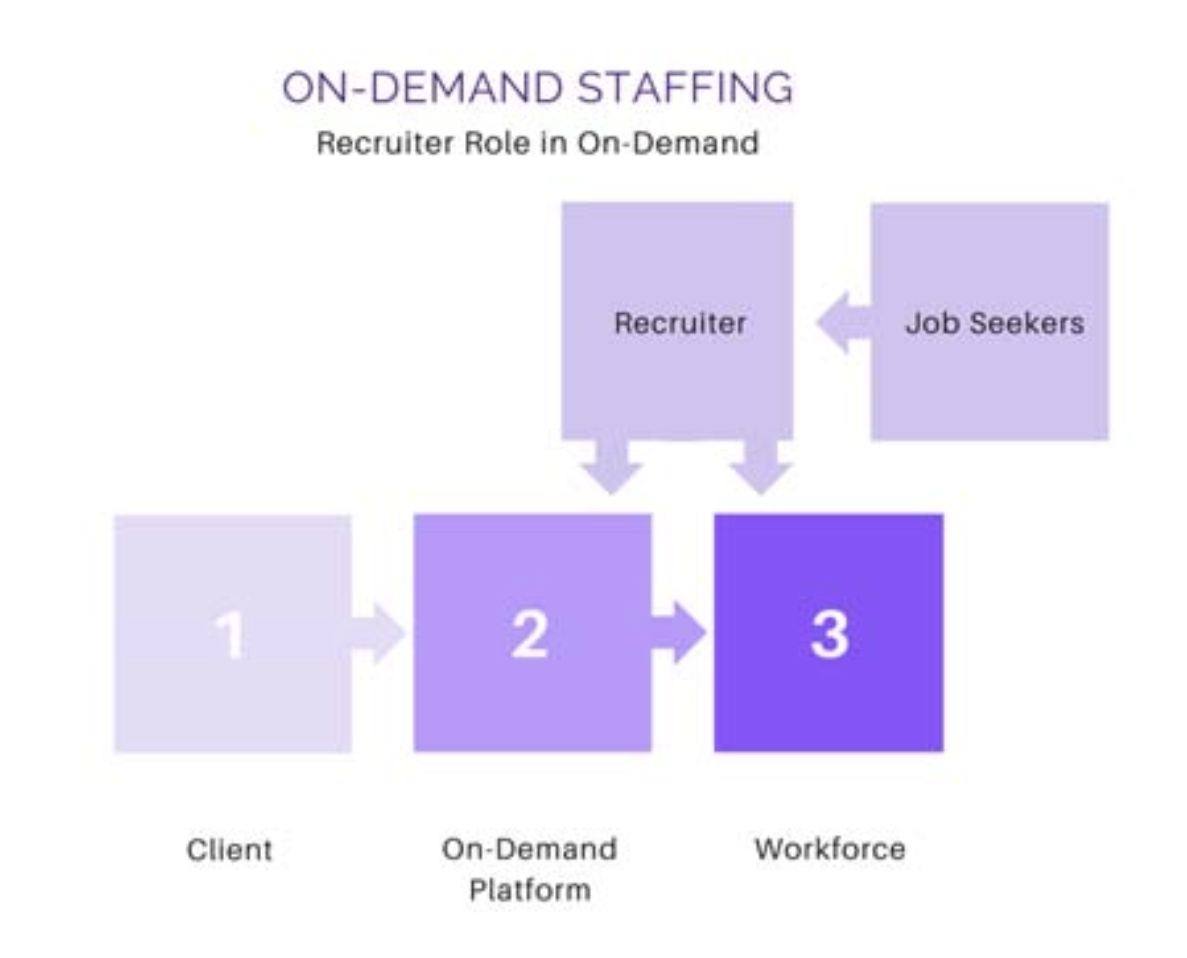
Design Process
Role of the Recruiter in Traditional Versus On-Demand Staffing Models
19 Sep 2025

In order to fully understand the benefit of on-demand staffing platforms and whether they’re right for your staffing company (now or at another point in time), we must dig deep and analyze how an on-demand staffing model functions at its core, aside from the frill of automation and platform features.
In this blog, we will dissect both the traditional and on-demand models. Mainly, how the role of the recruiter changes and why on-demand is arguably more optimal in saving time and resources.
It is probably safe to say you’re already familiar with traditional staffing methods, but for comparison purposes, let’s break it down anyway.
This model is relatively linear:
- A company looking to hire contacts a recruiter (or member of the administrative team) at a staffing company regarding a job request.
- The assigned recruiter (or sourcing specialist) sources candidates through ATS systems or job boards and pre-screens a select few.
- The client conducts interviews and hires the best candidate.
- The staffing company’s accounting department bills the client and receives payment for their services.

Now, let’s take a look at the on-demand model. The magic of this model is that the platform replaces the main role of the recruiter in traditional staffing (connecting clients to jobseekers).
Instead, the recruiter is placed outside of this process and focuses on screening and vetting candidates, ensuring quality workers are on the platform and are a great fit for the job types. So, when a client places an order, the platform instantly connects them to the best match:
- Client places an order for staff on the on-demand platform.
- The platform outreaches and matches top pre-vetted candidates to the job. Either the platform or your recruiting team can assign someone to the job.
- The job is completed and the platform handles payroll and invoicing.

This process is repeatable and can occur at any time- the client doesn’t need to wait for a recruiter to initiate matching and the workforce that the platform notifies is already pre-vetted for the job.
It also takes place within a matter of minutes on the platform, while in traditional staffing it can take weeks.
Conclusion
If your staffing company is bottlenecking at the matching stage of hiring (either you don’t have enough recruiters, fill rates aren’t high enough, or communicating back and fourth with clients and candidates is too time consuming), it might be a good idea to consider an on-demand model. Learn more about Wolf’s on-demand platform by booking a demo today.

Launch Your Own Branded Staffing Platform—Fast
Book a demo to see how Wolf automates matching, scheduling, and payments under your brand.


.png)


